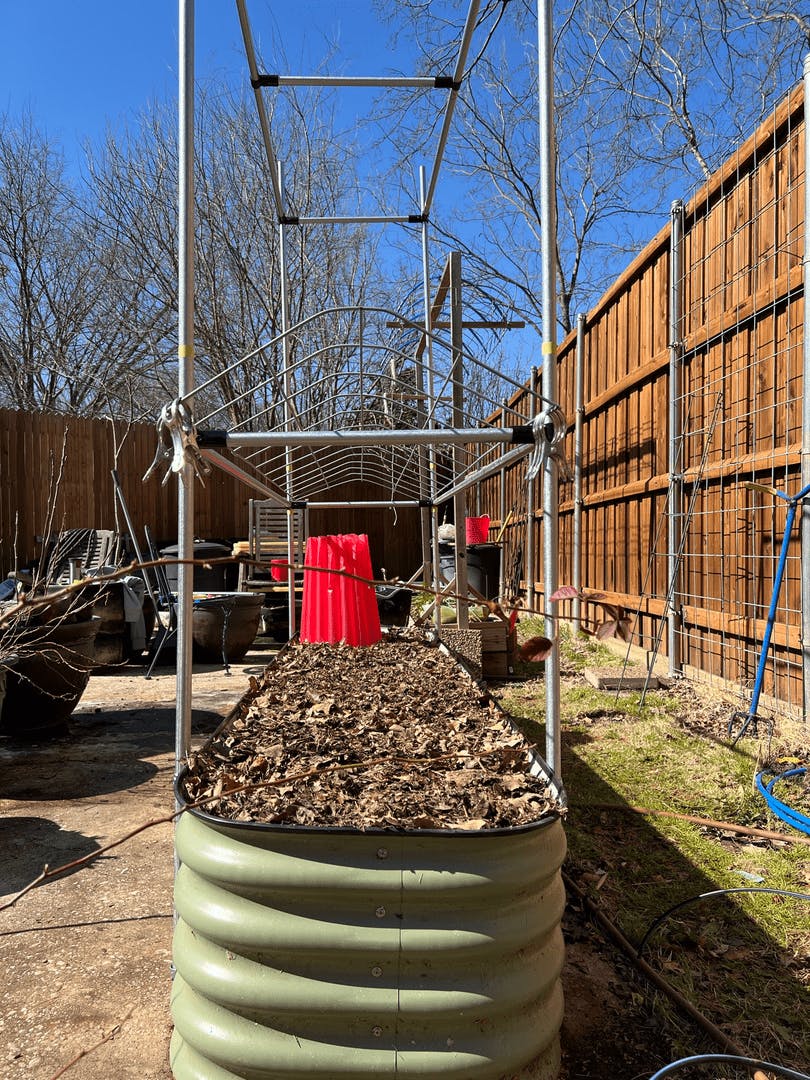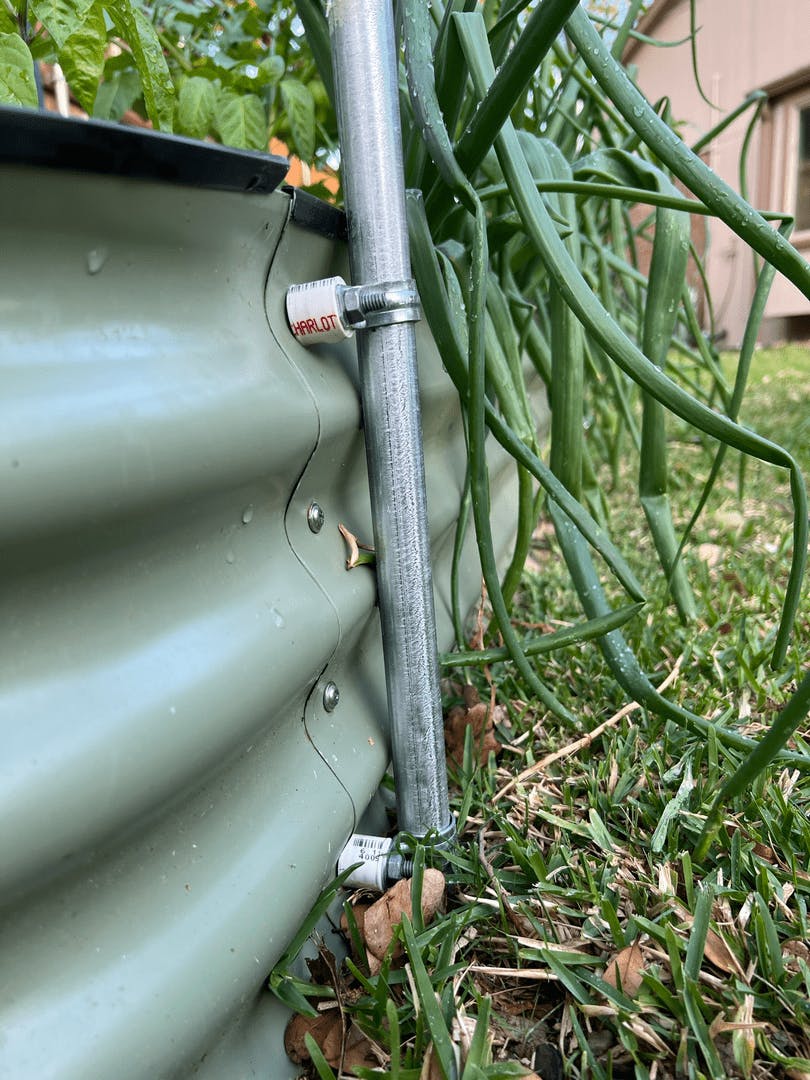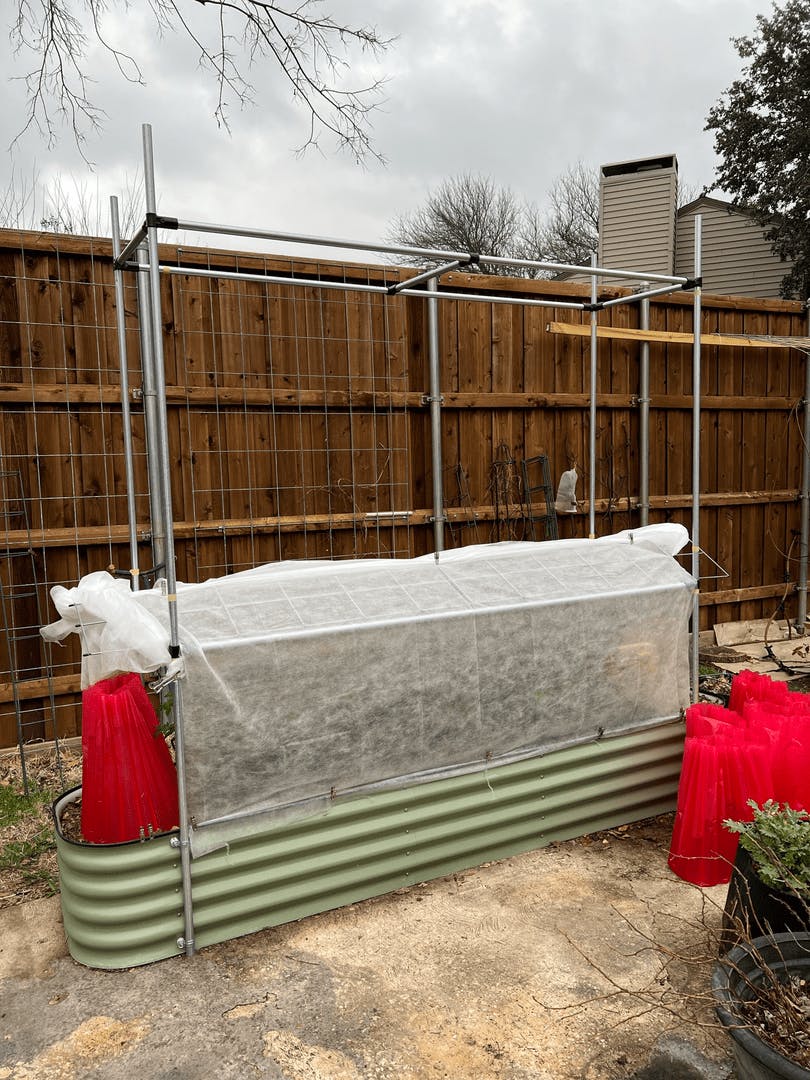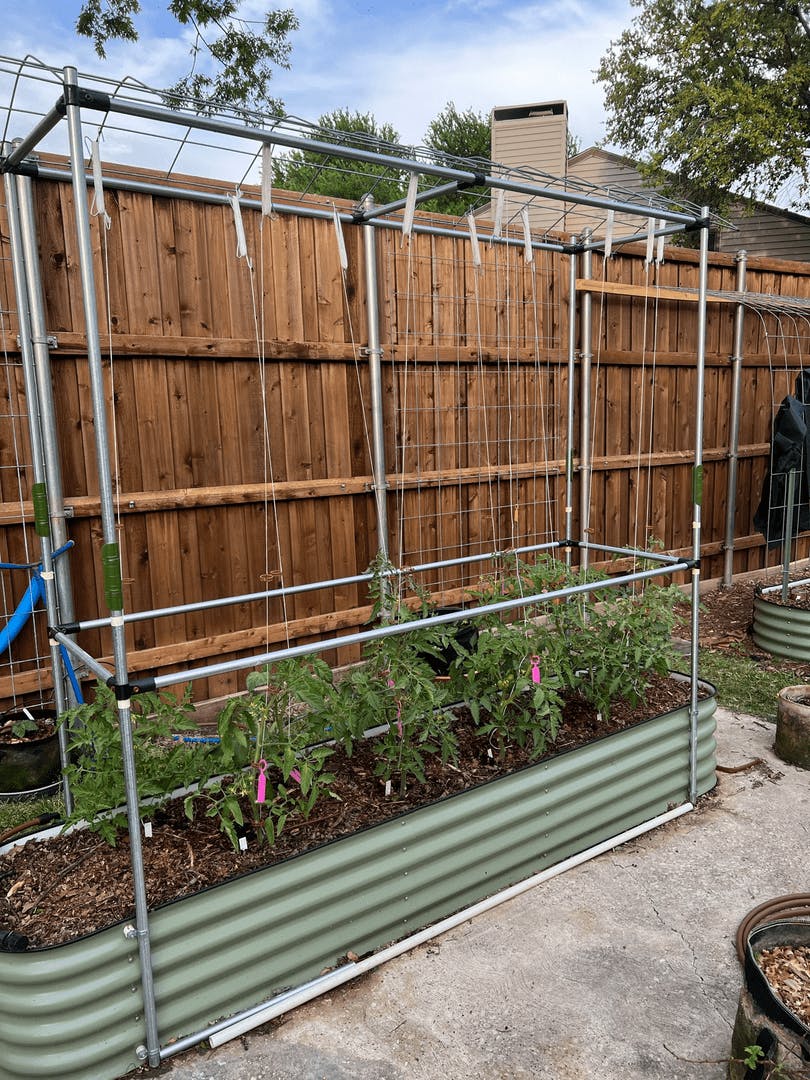I built what I hope will be a very versatile trellis system for my raised bed - I can use it in the winter to support frost cloth and I can use it in the summer to support my tomatoes.
The trellis is about 7.5 ft tall (the highest I can reach w/o a ladder) and has two "shelf supports" - one at the top of the frame and one about 30" from the top of the raised bed. I purchased a piece of 8' x 50" cattle panel and cut it into two pieces (8' x 20" and 8' x 24"). I slightly bent the 24" piece to form an arched top that fits perfectly between the trellis frame. The arch supports frost cloth w/o sagging and allows water to run off. I can't prove it (I have no engineering experience), but the arch also seems to make the panel a little sturdier.
Now that the weather is warmer, I moved the arched piece to the top of the trellis to hold my tomato trellis hooks. Additionally, I could add shade cloth to the top in the worst part of summer.
To attach the trellis to the raised bed, I removed 8 of the raised bed bolts (two from each corner) and replaced each with the following: washer, 1 1/2" bolt (these are on the inside of the bed), nut, PVC spacer, one-hole conduit strap, then one final nut (these pieces are on the outside of the bed).





